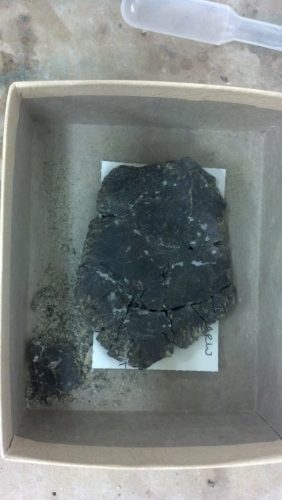My name is Andrea De Renzis and I’m a PCP-PIRE Museum Intern here at the FLMNH. I’m interested in Vertebrate Paleontology and am currently working in that department of the museum.

While I am most interested in primates, I have a great appreciation for all sorts of animals and have been really enjoying working with the fossils from the Panama collection. I have spent my first weeks here at the museum preparing fossils, organizing the Panama collections, and learning new computer programs for my future research. In the fossil prep lab I have worked on various kinds of vertebrate fossils ranging from crocodile osteoderms to horse teeth. There is an especially large amount of turtle fossils and I have found preparing those very exciting because many of them are able to be glued back together and reconstructed.
In order to organize the collection, myself and two other interns, Justy and Ariel, first separated the fossils by formation in which they were recovered and then ordered them taxonomically. This was a fun task because we came across super interesting fossils while we were working. Some of the most interesting to me were the tooth of a hedgehog and the tooth of a flying squirrel. While organizing the collection, I learned about a few fossils that I have never heard of before, for example Paratoceras, an artiodactyl (an even toed ungulate).
Last week I learned how to use the programs ImageJ and Avizo in order to process CT scans into 3-d images. Recently some researchers had gone to Duke University and CT scanned various fossils and soon it will be both mine and Justy’s job to turn these scans into 3-d images. There are various fossil that have been scanned including shark teeth, horse teeth, and very soon, rodent teeth will be as well. I am eager to start working on this and plan to do so later this week.